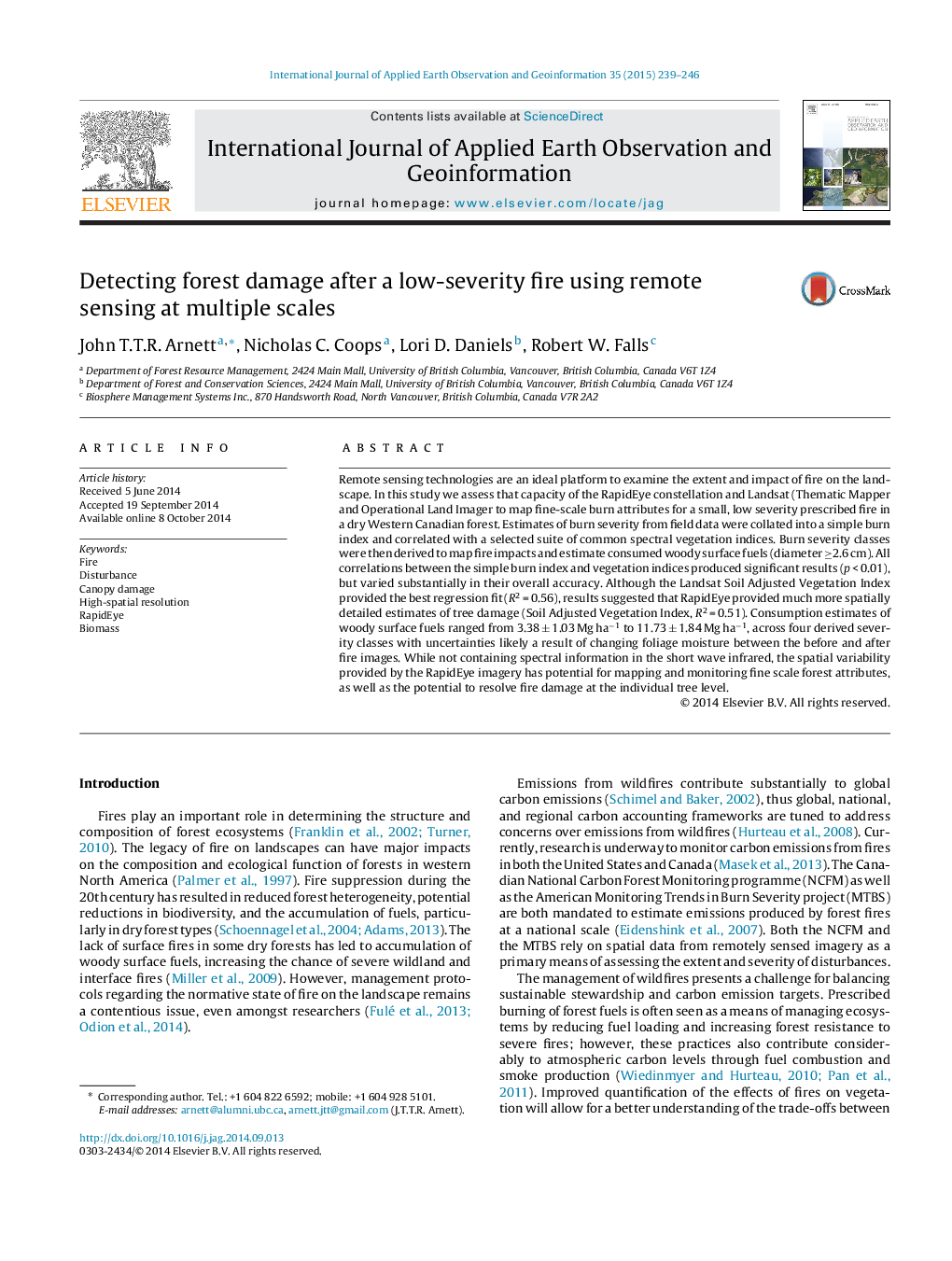| کد مقاله | کد نشریه | سال انتشار | مقاله انگلیسی | نسخه تمام متن |
|---|---|---|---|---|
| 4464718 | 1621823 | 2015 | 8 صفحه PDF | دانلود رایگان |
• Conventional change detection techniques were applied to Landsat and RapidEye imagery and used difference were analyzed.
• The Soil Adjusted Vegetation Index provided the best correlation between damage to individual trees and satellite imagery.
• Imagery from the RapidEye constellation was able to differentiate various levels of canopy damage.
Remote sensing technologies are an ideal platform to examine the extent and impact of fire on the landscape. In this study we assess that capacity of the RapidEye constellation and Landsat (Thematic Mapper and Operational Land Imager to map fine-scale burn attributes for a small, low severity prescribed fire in a dry Western Canadian forest. Estimates of burn severity from field data were collated into a simple burn index and correlated with a selected suite of common spectral vegetation indices. Burn severity classes were then derived to map fire impacts and estimate consumed woody surface fuels (diameter ≥2.6 cm). All correlations between the simple burn index and vegetation indices produced significant results (p < 0.01), but varied substantially in their overall accuracy. Although the Landsat Soil Adjusted Vegetation Index provided the best regression fit (R2 = 0.56), results suggested that RapidEye provided much more spatially detailed estimates of tree damage (Soil Adjusted Vegetation Index, R2 = 0.51). Consumption estimates of woody surface fuels ranged from 3.38 ± 1.03 Mg ha−1 to 11.73 ± 1.84 Mg ha−1, across four derived severity classes with uncertainties likely a result of changing foliage moisture between the before and after fire images. While not containing spectral information in the short wave infrared, the spatial variability provided by the RapidEye imagery has potential for mapping and monitoring fine scale forest attributes, as well as the potential to resolve fire damage at the individual tree level.
Journal: International Journal of Applied Earth Observation and Geoinformation - Volume 35, Part B, March 2015, Pages 239–246
